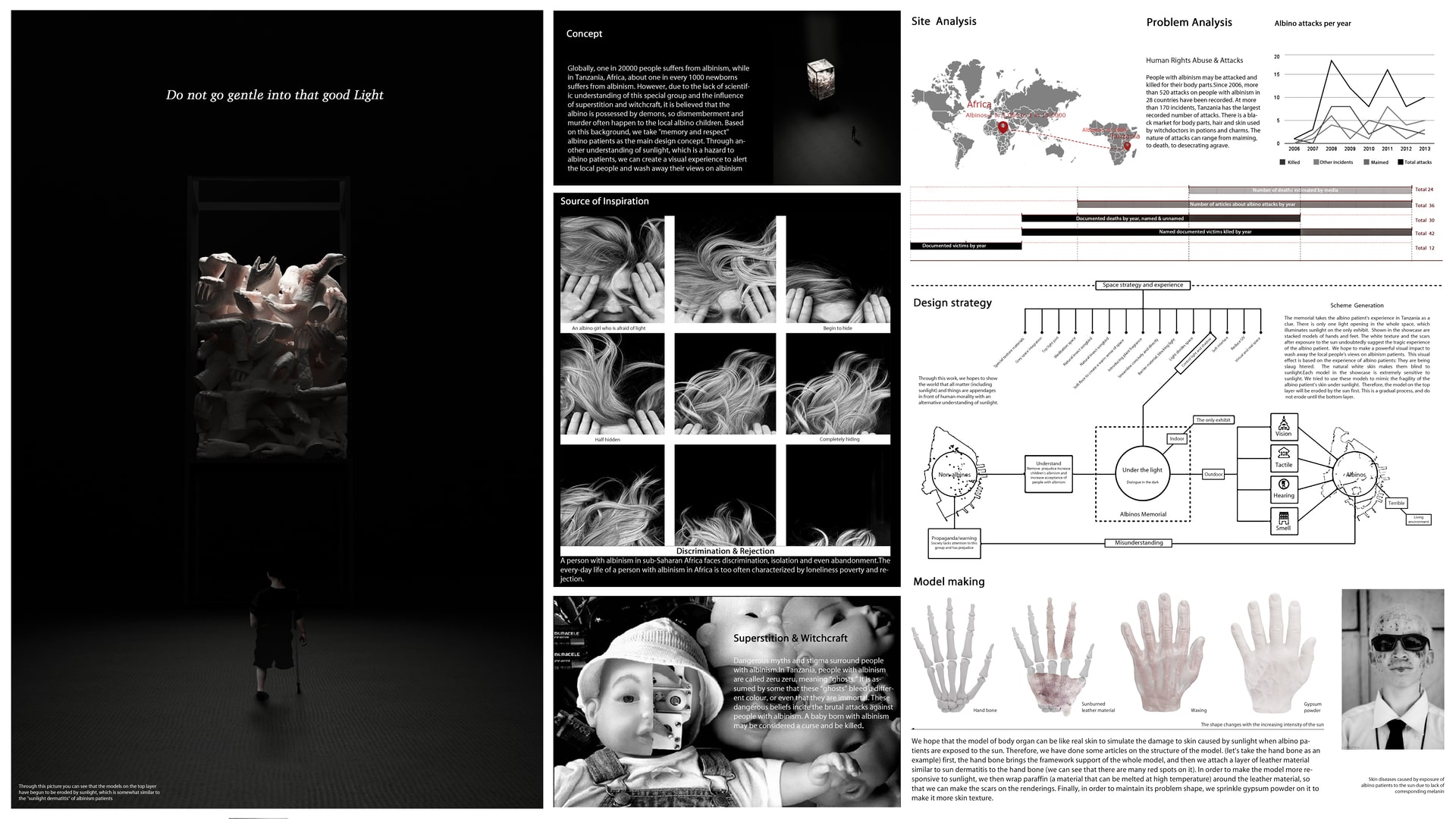Project Description
The image of albino patients in the film and television works we see is often negative, which makes albino patients feel that they are marginalized by society. However, in real life, they are misunderstood and persecuted far more than that. Globally, one in 20000 people suffers from albinism, while in Tanzania, Africa, about one in every 1000 newborns suffers from albinism. However, due to the lack of scientific understanding of this special group and the influence of superstition and witchcraft, we believe that the albino is possessed by demons, so dismemberment and murder often happen to the local albino children. The designer is very sad about this social phenomenon. Therefore, based on this background, we take "Commemoration and respect" albino patients as the main design concept to design a friendly and safe "no sunshine" memorial hall for the albino patients who are afraid of light, and to popularize the knowledge of albinism to the local healthy people who are superstitious and discriminate against albino patients. The design concept is connected by "touch light" and "escape light" for two mutually opposite site clues. From the different perspectives of healthy people and albino patients, we can understand what the light around us means, how to interweave the positive and negative feelings of these two kinds of light to people under the same eaves, and how to design the light for people who are afraid of the light, which is what this work really wants to explore. This design is based on the current situation of high incidence rate of albinism in Tanzania. By abstracting the space and luminous conditions of Tanzania city streets, we design a memorial for the public, but need to avoid light. The memorial hall is based on the experience of albino patients in Tanzania. There is only one light opening in the whole space, which shines sunlight on the only exhibit. What is displayed in the exhibition cabinet is the stacked model of hands and feet. The white texture and the scars after exposure undoubtedly indicate the tragic experience of albino patients. We hope to make a strong visual impact to wash away the local people's views on albino patients. This visual effect is based on the experience of albino patients: 1. They are being slaughtered. 2. Their natural white skin blinds them to sunlight. Every model in the exhibition cabinet is extremely sensitive to the sun. We try to use these models to imitate the vulnerability of the skin of albino patients in the sun. So the top layer of the model will be the first to be eroded by the sun, which is a gradual process, until the bottom layer does not erode. Through this work, we hopes to show the world that all materials (including sunshine) and things are accessories in front of people's morality with an alternative understanding of sunshine.
